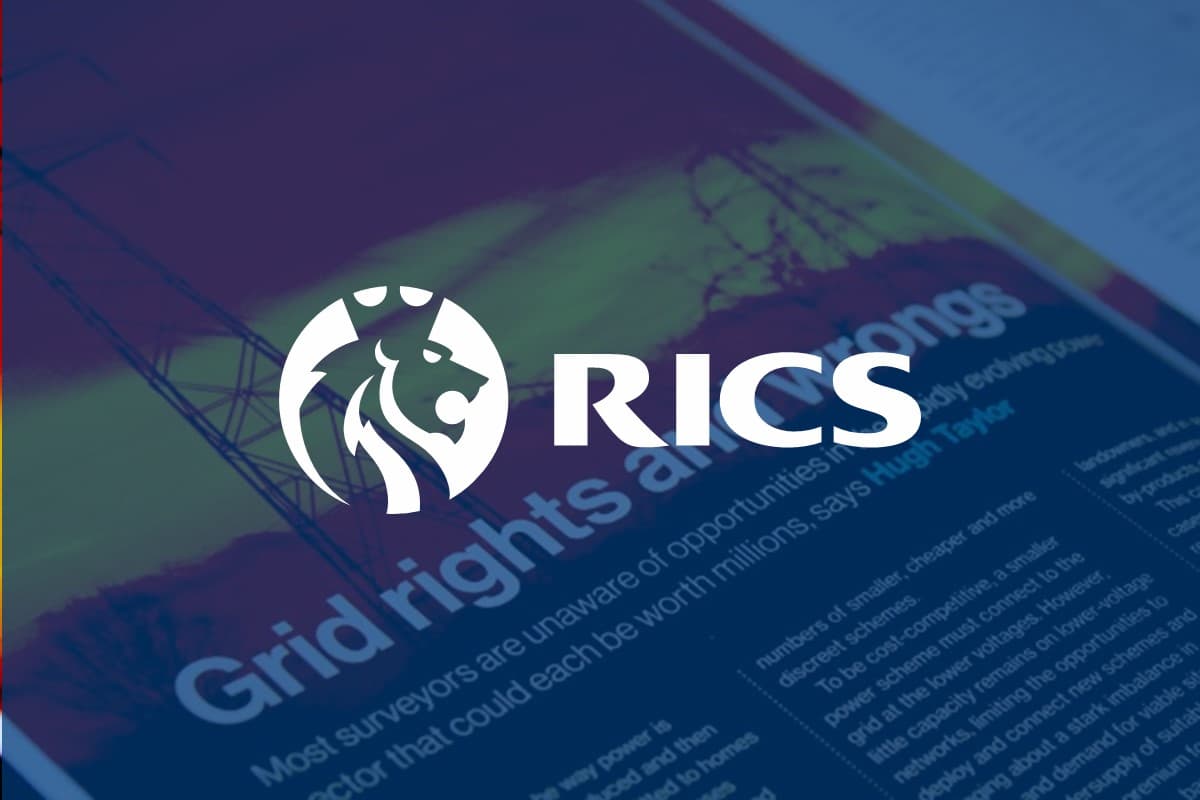Grid rights and wrongs
Published July 2016
Below are excerpts from an article written by Hugh Taylor for the RICS Property Journal. In the full article, Hugh looks at the growing market for small decentralised power schemes and explains why there are the most opportunities for successful schemes in urban, commercial or industrial landscapes.
Hugh also highlights the importance of securing grid connection rights. Grid rights can be very valuable, but only if they are secured and transacted safely. He concludes with some dos and don’ts to help chartered surveyors and their clients avoid the common grid right pitfalls.
The full article from the RICS Property Journal July/August 2016 can be found here:
http://www.rics.org/uk/news/journals/property-journal/property-journal-july-august-2016/
A premium for property with grid connection rights
The way power is produced and then transmitted to homes and businesses is changing. There is a move away from large, centralised generation to smaller, decentralised and increasingly cleaner power plants.
To be cost-competitive, a smaller power scheme must connect to the grid at the lower voltages. However, little capacity remains on lower-voltage networks, limiting the opportunities to deploy and connect new schemes and bringing about a stark imbalance in supply and demand for viable sites.
This undersupply of suitable sites has created a premium for property – or in some instances, bare ground – for which rights to connect power plant to the grid are available. These grid rights can considerably transform the rental or capital value of a site, provide investment opportunities for more entrepreneurial landowners, and in some instances, offer significant revenue opportunities.
This can be illustrated by extreme cases, where grid-consented sites with rental values of less than £50,000 per annum have been worth in excess of £250,000 per annum for lease periods of 30 years once grid rights have been secured. This represents a total annual rental uplift of £6 million over a lease term.
A predominantly urban market
Since 2015 the market has been focused on commercial and industrial landscapes.
This swing towards urban environments is a product of the change in technologies being favoured. There is a growing demand for reliable and flexible power, and among the technologies that deliver this are diesel generators (gensets), gas gensets and battery storage.
These typically require less than an acre of ground, can sometimes be integrated into existing buildings and are looked on more favourably by planners when sited in areas of commercial and industrial land use.
The common characteristic of these schemes is access to the 33,000V (33kV) grid. While 33kV circuits do cross rural areas, their destinations are nearly always settlements, which is where the demand for electricity is greatest. It is these settlements, therefore, that provide the greatest likelihood of proximity to a 33kV circuit.
Furthermore, the national lack of capacity on 33kV circuits has mainly been brought about by extensive deployment of wind and solar schemes in rural areas. More urban parts of the grid have both fewer connections to such technologies and a higher demand for power. Securing capacity – and therefore grid rights – is typically easier in urban areas.
Gas gensets also need access to the medium- or intermediate-pressure gas grid as well as significant gas capacity. Again, the gas grid can be accessed in some rural locations, but is mainly to be found in towns and cities.
Owing to their rapid rates of discharge, known as ramp rates, battery storage schemes would cause unacceptable step-changes in voltage on many areas of the grid that do not have sufficient demand for electricity to absorb those voltages. This technology too, therefore, is more suited to urban than to rural areas.
Getting value for grid rights
With growth in demand for decentralised power sites, increasing revenues available to generators and ever-decreasing availability of grid capacity and connection opportunities, the value of grid rights will continue to rise.
Grid rights must be created on a site-by-site basis, and they can be lost as well as gained. The available grid capacity is issued by licensed network operators on a strictly first-come, first-served basis. As such, valuable grid rights are available only to a few site owners in a given locality, if any.
Being conscious of the range of power-related technologies, their market conditions, the opportunities that each represents for a site owner at any given point in time and in future, as well as the credibility of the key players in each market, is essential.






